Natural Diamonds – Bling On Good Design!
From gleaming facades to exteriors that enhance natural light inside, from crystallized walls to futuristic celebrations, stunning buildings all over the world gather inspiration from the eternal beauty of natural diamonds.
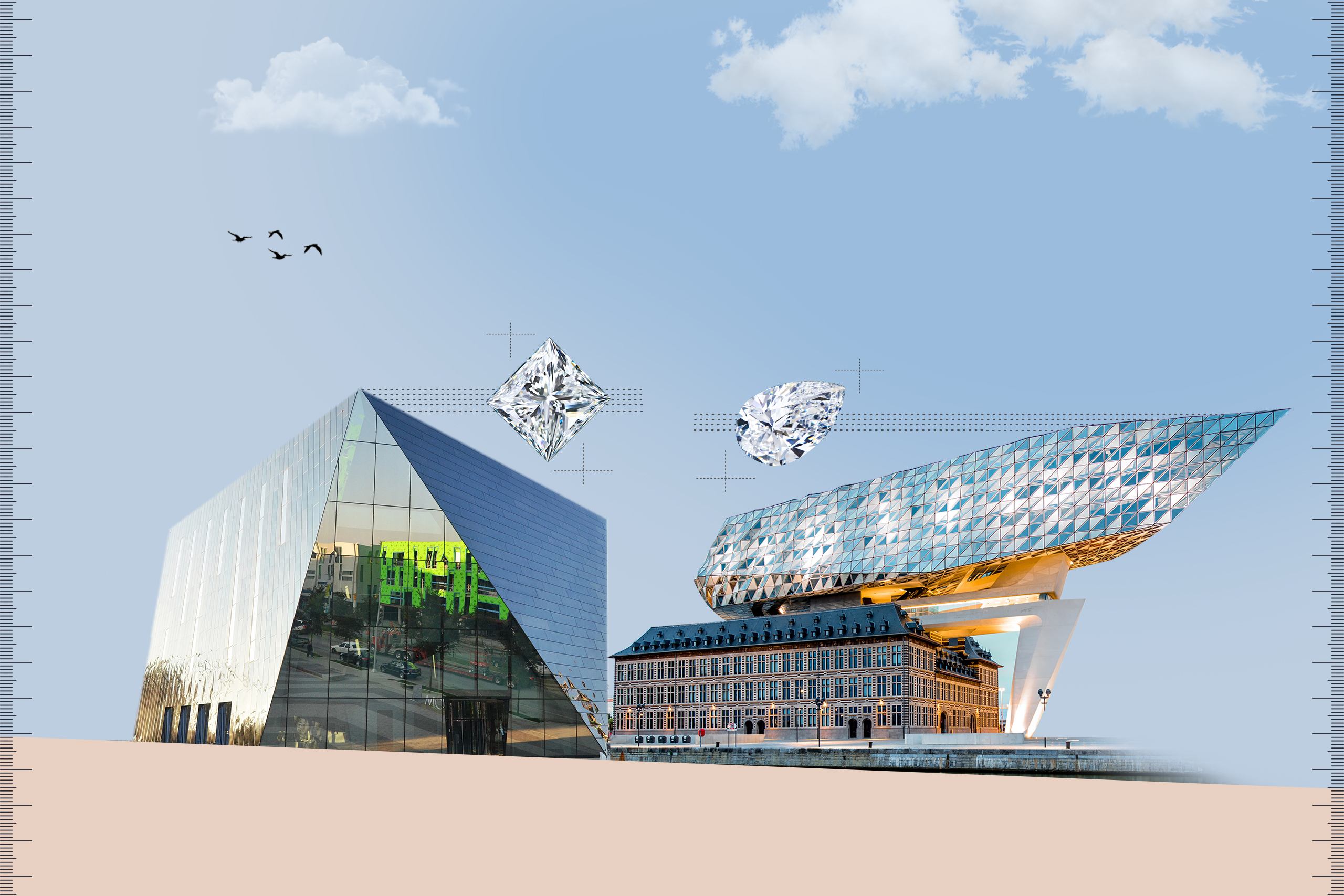
The amalgamation of asymmetrical lines, sharp faceted edges and geometric precision are characteristic of a series of marvels of modern architecture that give them an aura of revolutionary luxury.
Golconda in India was known to be the Diamond Capital of the World – back then, the diamond culture of Golconda had an undeniable impact on the region culturally, economically and even architecturally.
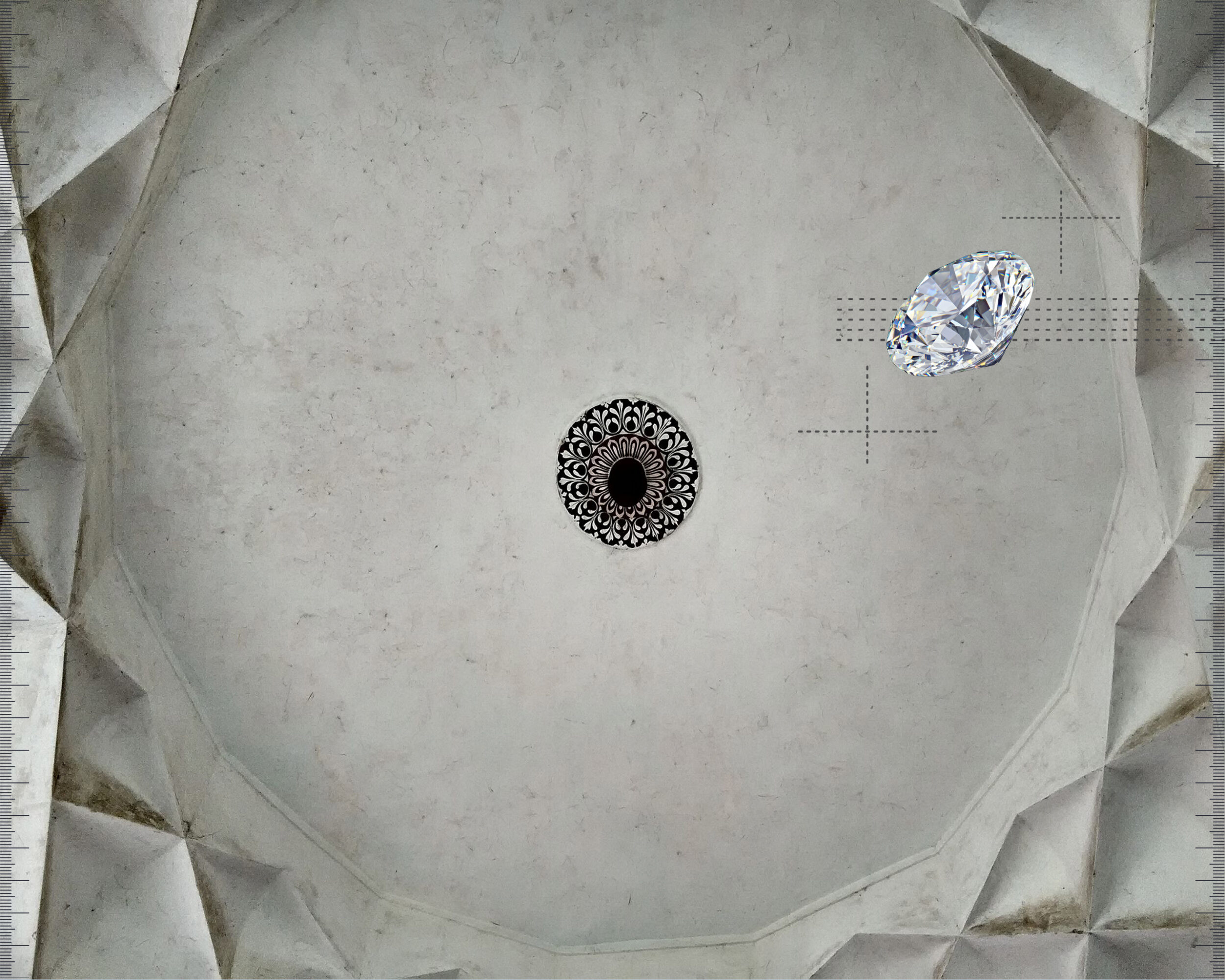
Constructed in the 1600’s, ‘The Golconda Fort’ sought to ensure the protection of the city’s treasury. The Fateh Darwaza within the Golconda Fort was designed in such a way that it reflected sound, much like how a natural diamond reflects light. This amplifier was so powerful that the guards could use this to warn garrisons as far as half a mile away within the fort, the epitome of an architectural and sound engineering marvel centuries on.
Principally, diamond cutting was the chief inspiration of the gate, a tradition that continues with time for architects all over the world to turn to multi-faceted and dazzling natural diamonds for their artistry even today.
The Port House, Antwerp
‘The Port House,’ by Zaha Hadid Architects, imposes over the remnants of a fire station. Considered to be one of the most sustainable architectural designs of our times, it is not just reutilising an older space effectively that gives it its identity but also the efficiency through resurrection.
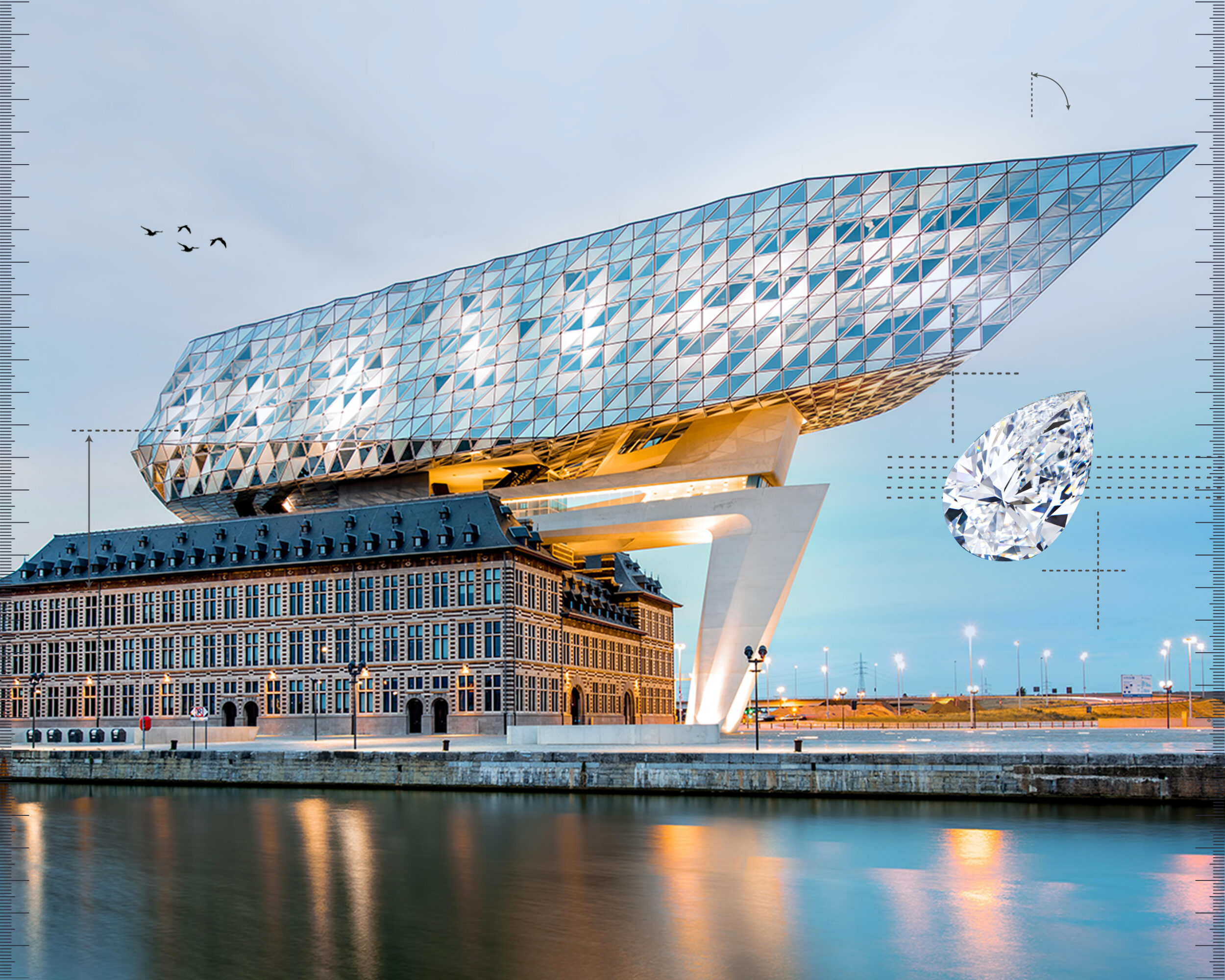
It’s borehole technology heats and cools the building with techniques that ensure minimal water consumption and the architecture ensures optimum daylight that reduces the use of artificial lighting methods. But what fascinates me most about this building is perhaps how it effortlessly encapsulates Antwerp’s history and symbiotic relationship with natural diamonds, paving its way for a glorious future!
Basque Health Department – Bilbao, Spain
Located between two of the busiest streets of the Ensanche area in Bilbao, the headquarters of the Basque Health Department has a staggering presence. Under the ministrations of award-winning architect Juan Coll-Barreu, sheets of glass came together to form a building inspired by natural diamonds. The multi-faced building draws its inspiration from the crystalline form of the rock, that like a diamond, lights up the building.
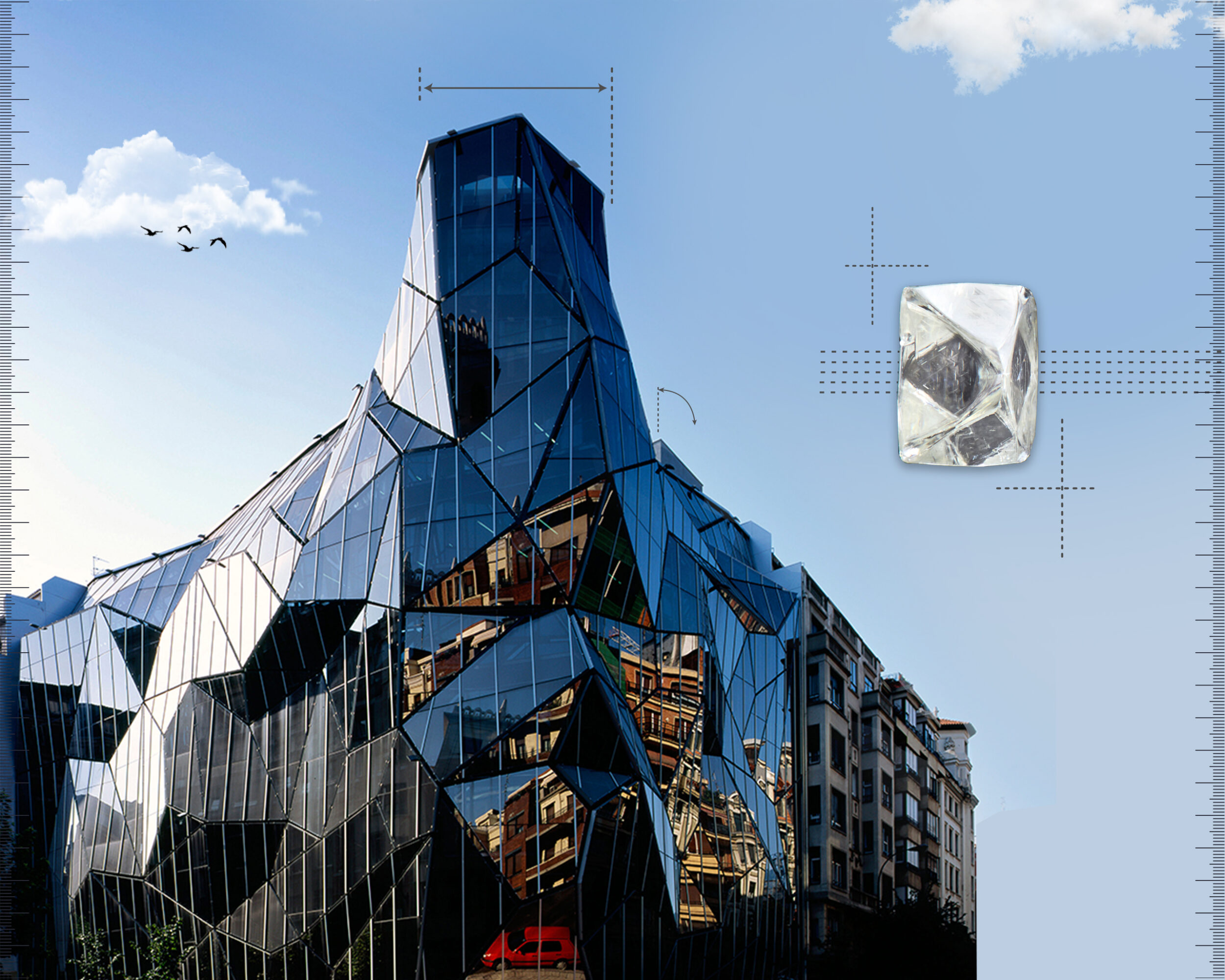
The malleability showcased through glass across the façade of the building reflects the various aspects of the city life, much like a diamond. All this, while adhering to the restrictive city regulations, ensuring fire resistance and natural insulation, doing away with air conditioners. Calculated dynamism at its best!
Le Kinémax – Poitiers, France
One of France’s most renowned amusement parks opened up to the public in 1987. Christened Futuroscope, the park designed by Denis Laming, was a tribute to the marvels of technology and the promises of advancement that the future held. A very impressive piece of design, what stood out most in the park was Le Kinémax – the most futuristic looking IMAX of all time.
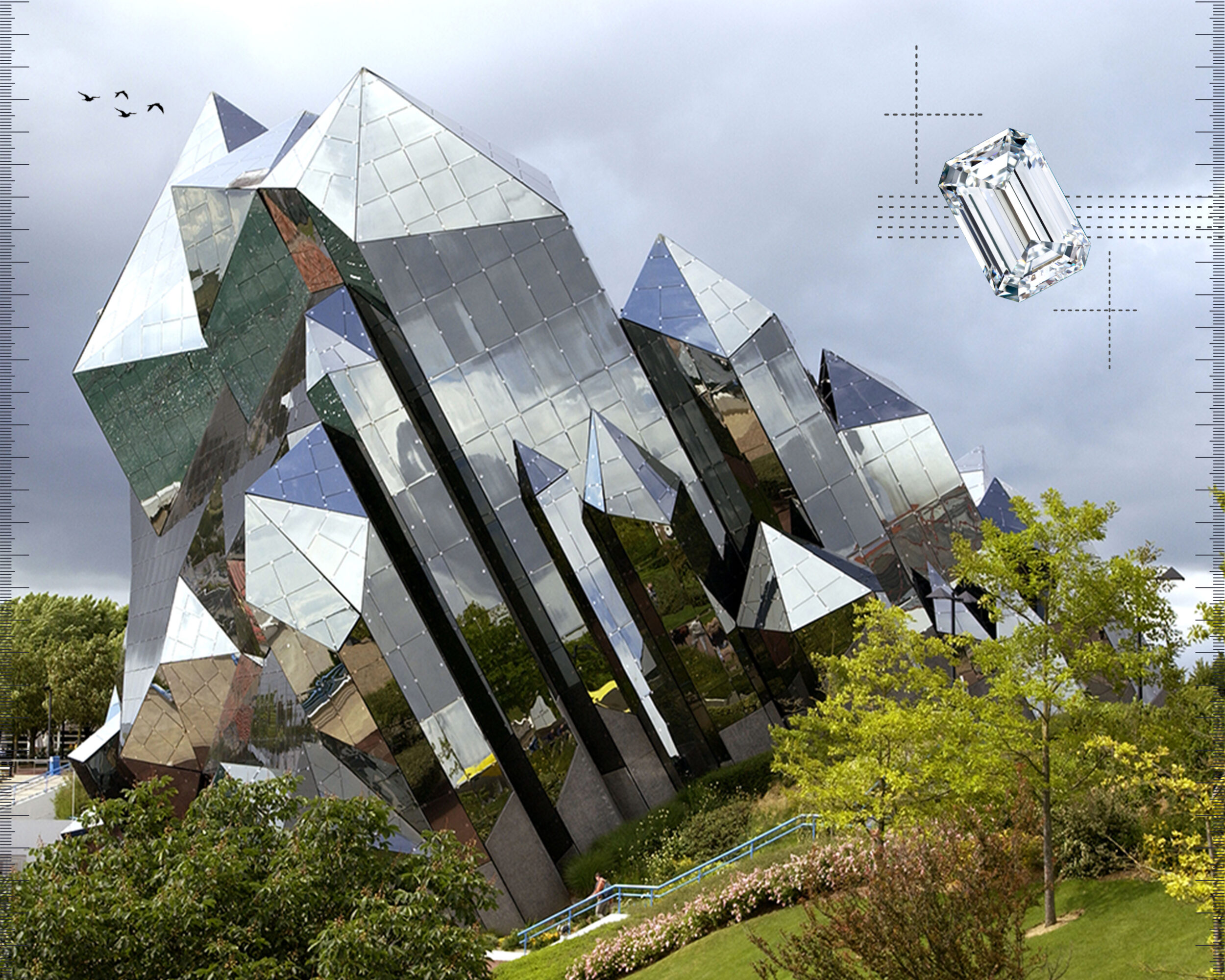
With numerous flat surfaces coming together to form asymmetrical angles, the light reflecting off the exterior is truly a sight to behold. Resembling a natural diamond emerging from the surface of the earth at a 60 degree incline, the built form is a tribute to this precious stone
Bali Chapel
Overlooking the white sands of the Sanur’s Grand Bali Beach Hotel, The Diamond Chapel is known to be one of the world’s most spectacular wedding pavilions. A blue diamond being the focus of this construction has a long, winding walkway to ensure breath-taking views from every angle at the location
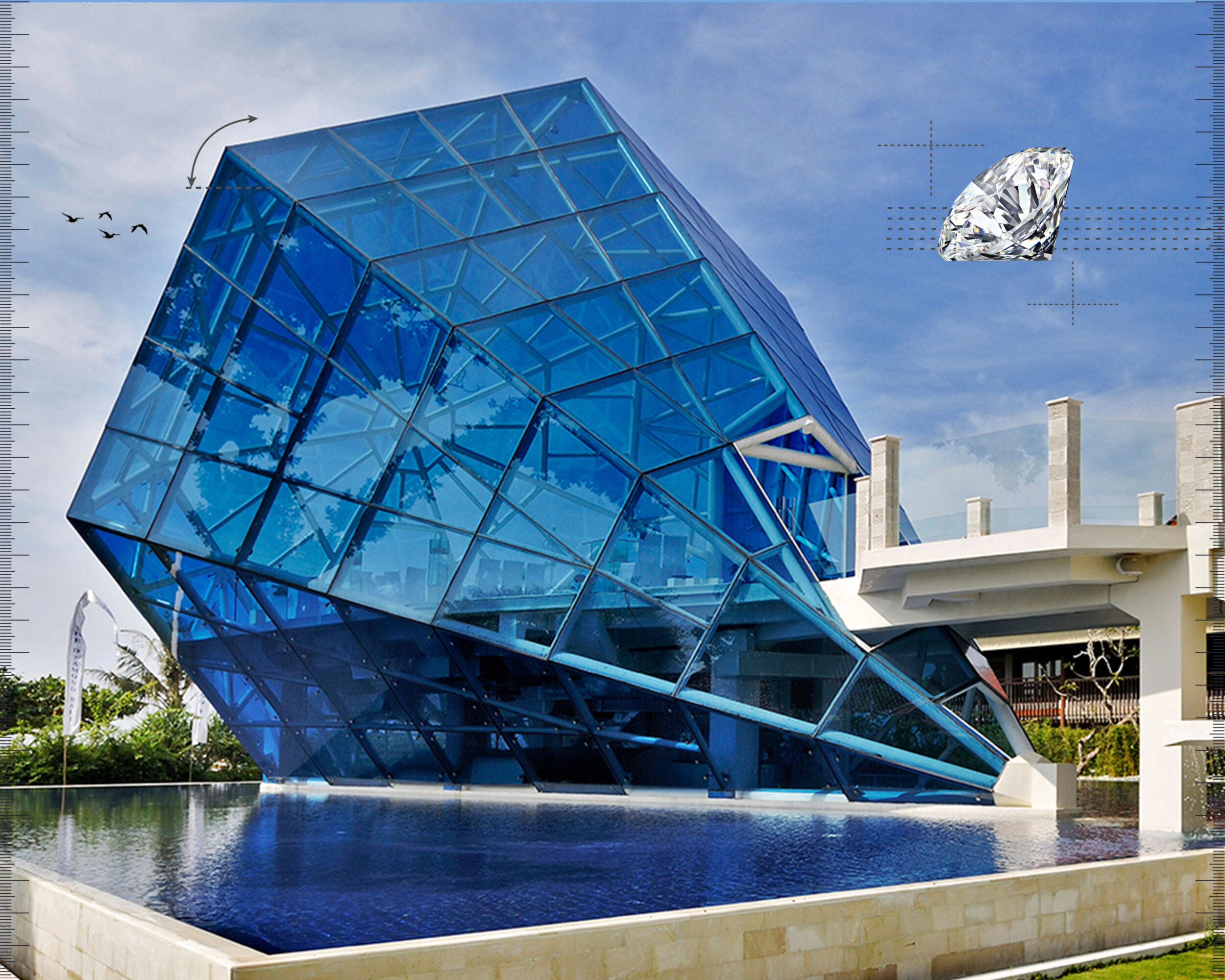
Located 2 meters above sea level, the Diamond Chapel was inaugurated in 2008 as a little slice of paradise, the magnificence of natural diamonds, heightened by the sparkling sea, the pristine sands and a lush tropical garden landscape, regarded as ‘the most beautiful chapel in the world’.
Harpa Concert Hall, Iceland
Designed by the Danish firm Henning Larsen Architects in collaboration with Icelandic-Danish artist Olafur Eliasson, the Harpa, Icelandic for ‘harp’ was opened for visitors in 2011. Home to the Icelandic Symphony Orchestra and the Icelandic Opera, as well as the renowned design store, Epal, this diamond faceted building has grown to become a favourite concert hall across the world.
Living up to its reputation of being a phenomenal hall with enviable acoustic technology, the building has already received numerous awards not just as a concert hall, but also for its striking architecture. Inspired by the precision of polished natural diamonds, the architectural wonder acts as a link between the busy city and the beauty of nature
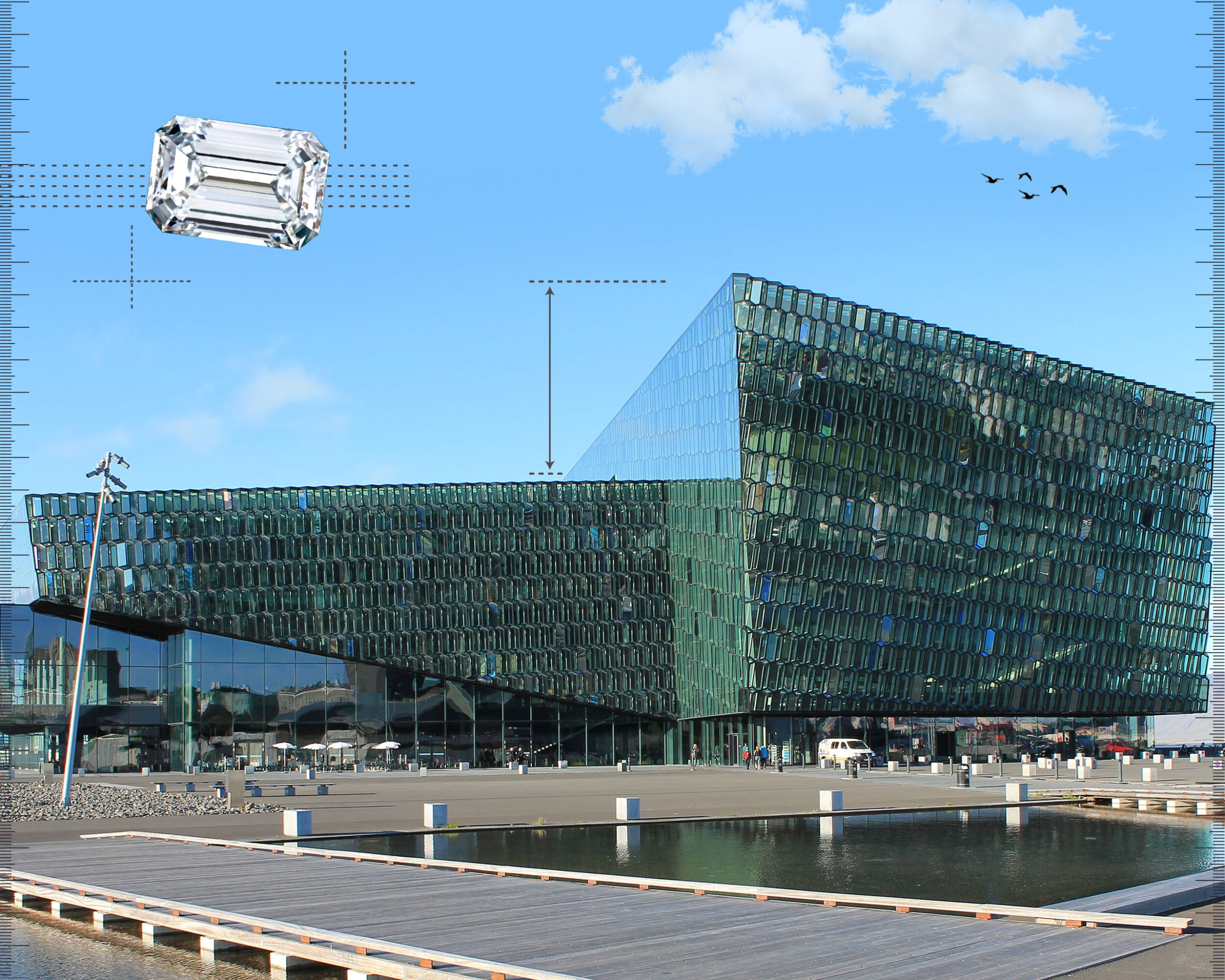
Located in Reykjavik, the building derives inspiration from the incomparable beauty of natural diamonds. With the glass panels changing colour according to its surroundings, the radiance of the building works in synchrony with its dynamism.
Museum of Contemporary Art, Cleveland
Designed by renowned architect, Farshid Moussavi, the Museum of Contemporary Art in Cleveland is considered to be one of the largest cultural hubs of the USA. At a staggering 34,000 square feet, it has grown to be hailed as one of the most innovative designs in the realm of architecture. 60 feet high, a hexagonal base leads to a square top that resembles a bright, natural diamond embedded in the heart of the city.
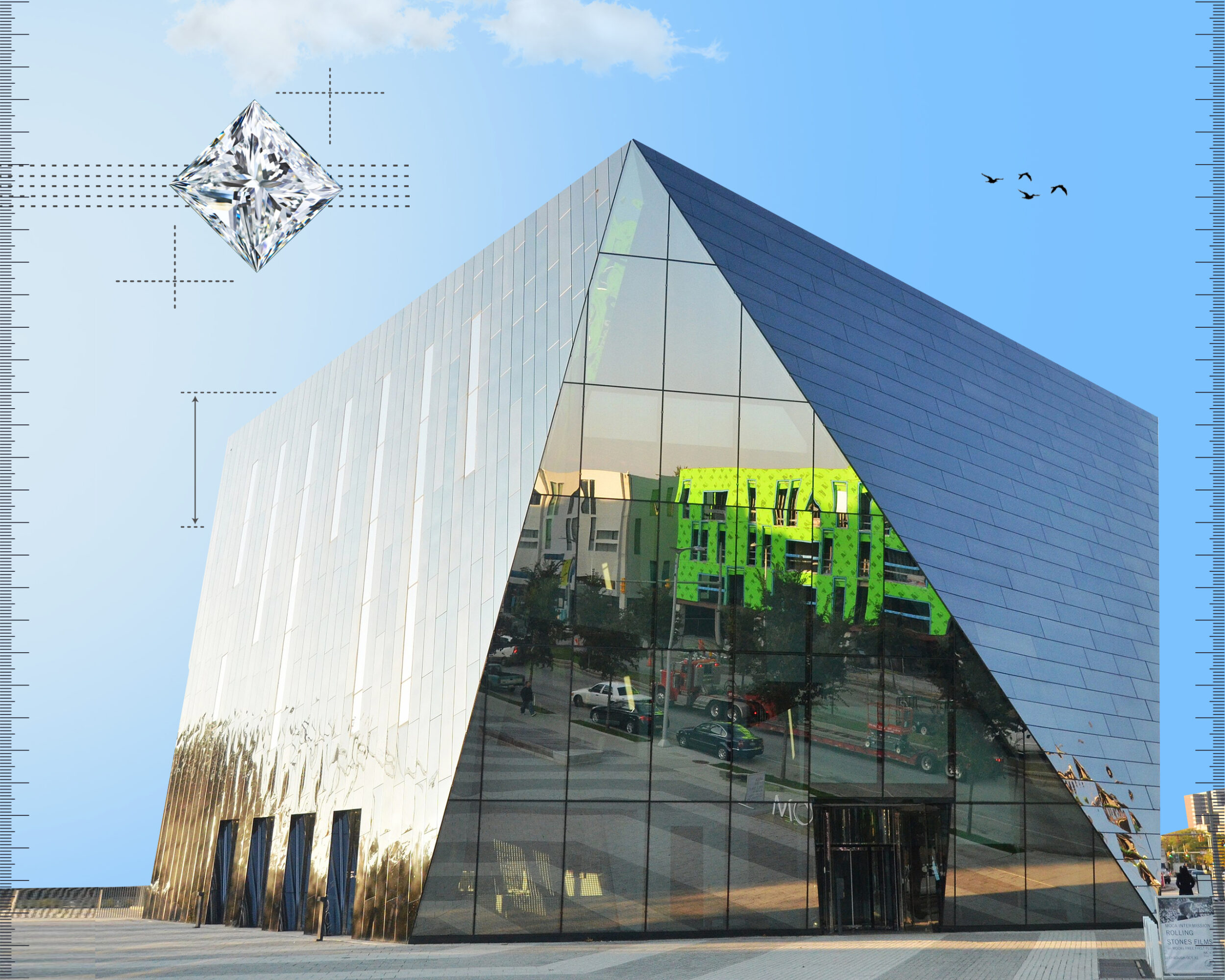
Located in the busy Uptown District of Cleveland, this four storey building was unveiled to the public in 2012. Encased in mirrored black stainless steel, its geometric, perfectly edged angles make it sparkle and shine through night and day.
The evergreen beauty of the non-collecting museum is what sets it apart from the rest. As I traversed the floors of the museum, the facets and openness reflected through the materiality of the built form, giving it an undeniably immersive character.
All across the world more and more buildings stand proud, gleaming towards the city’s skylines. Be it the Spring Street Salt Shed in New York or the Shenzhen Universiade Sports Centre in China, each one of these architectural forms are a tribute to the miracle of nature – natural diamonds. These buildings prove why some believe that a diamond is a designer’s favourite muse.
